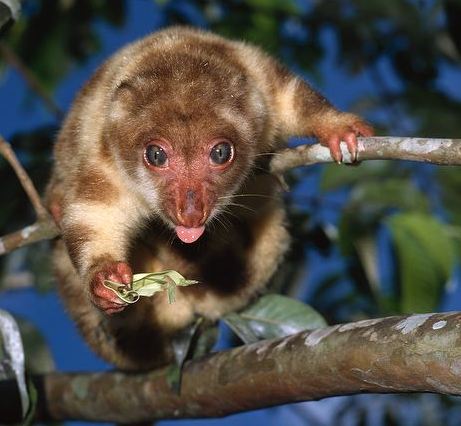
Waigeou cuscus, or Waigeouspotted cuscus (Spilocuscus papuensis)
Phylum —chordata
Class — mammalia
Order — diprotodontia
Family — phalangeridae
Genus—spilocuscus
Appearance
Adult males are almost pure white, with irregular black spots in the back. Females are similar to males, but the black spots are smaller. Babies have a black-and-gray coat color that hides spots.
Habitat
It is endemic to the island of Waigeo in Indonesia.
Behavior
Waigeou cuscus does not use a den or a nest, but builds a platform out of leaves. This nocturnal animal that lives in trees, which slowly travels through the trees, grasping the trunk or branches with strong limbs, on the ground it moves with the speed of a fast human walk.
Diet
In natural conditions, it eats fruits, flowers, leaves and young shoots, as well as birds, eggs and small animals.
Reproduction
Cuscuses mate year-round and with multiple partners, conducting courtship on tree limbs. The gestation period for a pregnant female is around 13 days, with a pouch period of 6–7 months. While females have four teats in their pouches and can have up to three young per birth, they rarely suckle more than two. Each young weighs no more than 1 gram at birth, and is held in the mother's well-developed forward-opening pouch. Cuscuses can live to be 11 years old, and reach sexual maturity around one-year-old.
In captivity
Cuscuses are very fond of gnawing rotten snags, branches, and picking out insects with their tongues. Therefore, you can place suitable snags from the forest in the aviary. You can also make a wooden block with channels that are filled with honey or insects, so that the animals have an interesting occupation.
The best aviary type is "Night forest".
The daily diet includes insects, pollen, honey, and fruit. Feed is spread out not only in feeders, but also on branches.
 Russian
Russian
 English
English
























